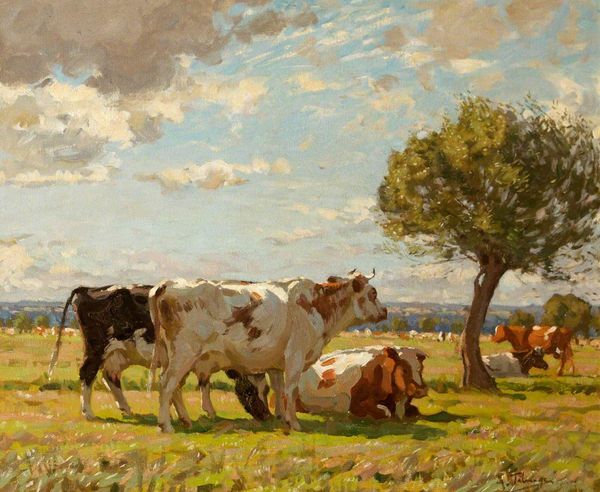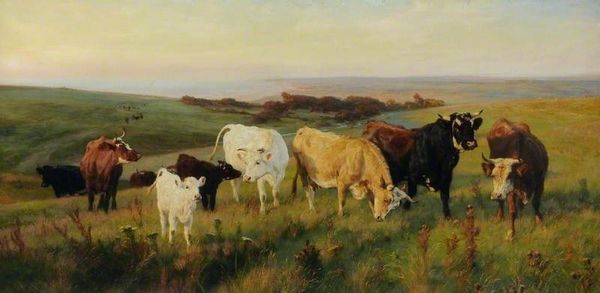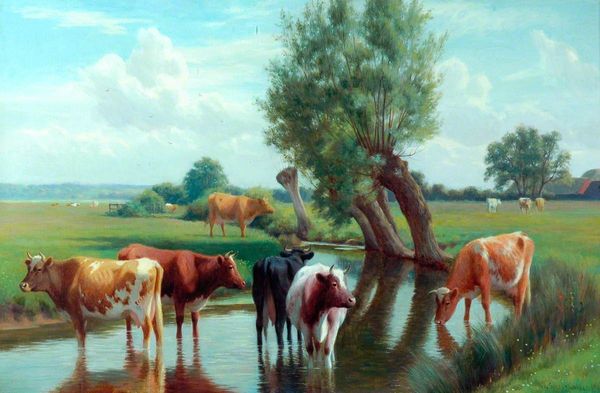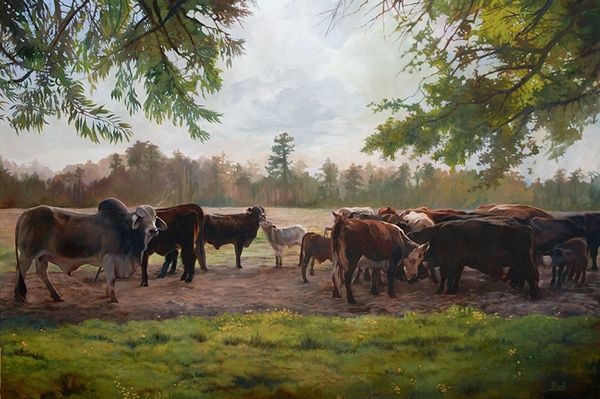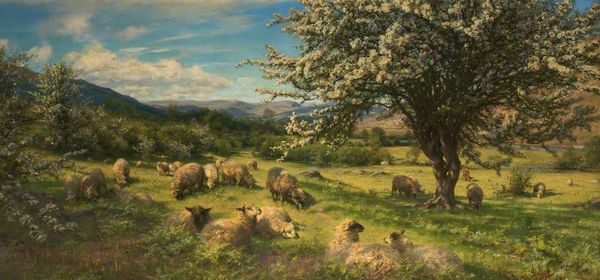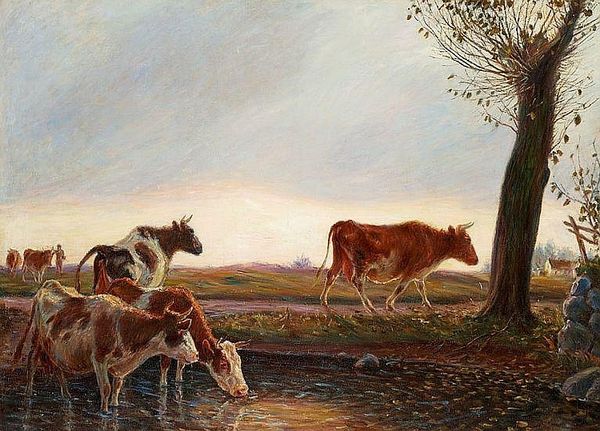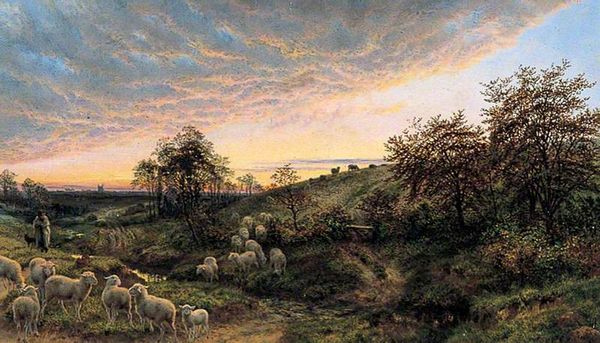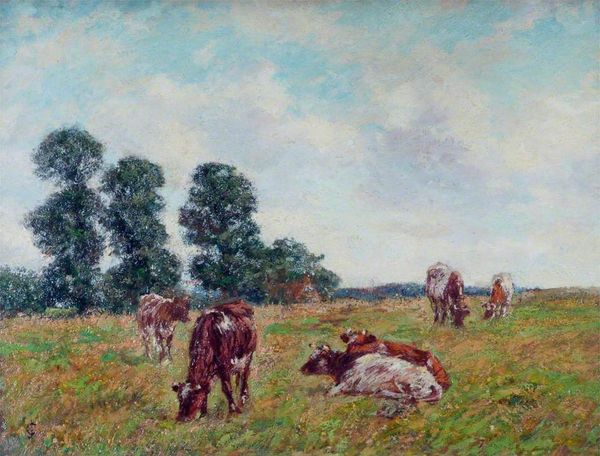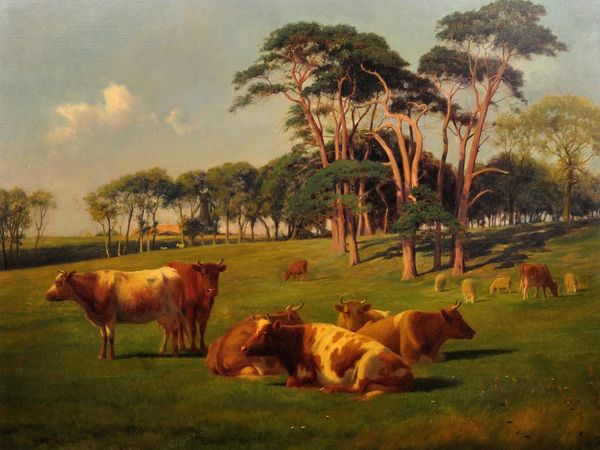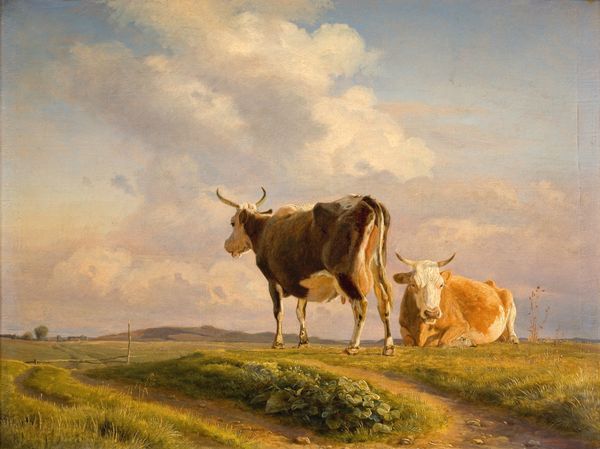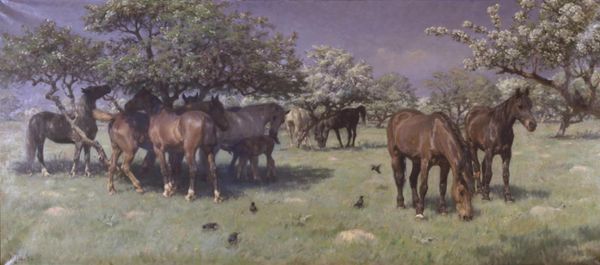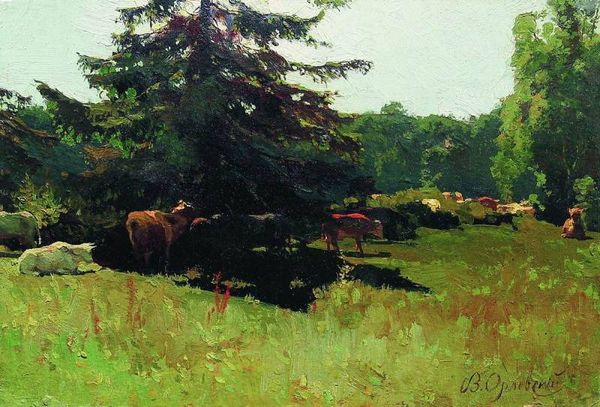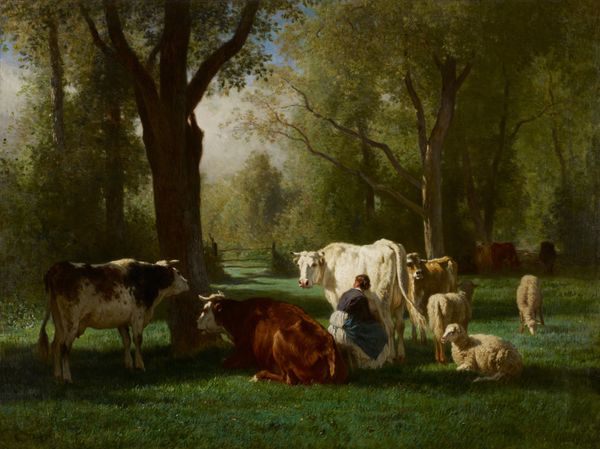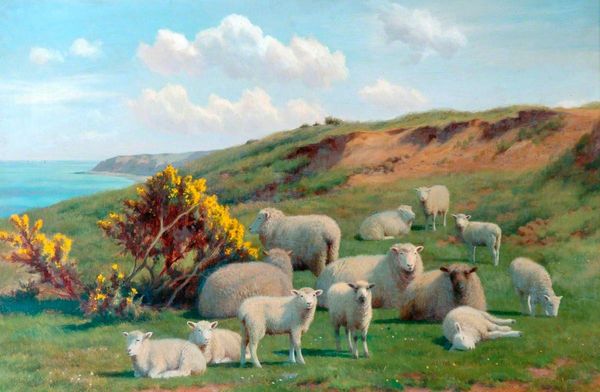
Copyright: Public domain
Editor: This is Henry William Banks Davis’s *Landscape in Wiltshire* painted in 1875. It's a beautiful oil painting with such soft light and rolling hills. There’s a herd of cattle grazing, and even though it's realistic, it still feels really romantic. What feeling does it give you? Curator: Oh, it completely sweeps me away. The way the light filters through those clouds—it’s as if the landscape itself is breathing. It's romantic, as you say, but not in a theatrical, Byronic hero way. More like a whispered secret between the land and the sky. The realism is key— it's that commitment to the ordinary that makes it feel so true. The cows aren't just cows; they’re a vital part of this tapestry, this pastoral poem in paint. Editor: I never thought of it as a poem, that's a beautiful description. So, how does this painting reflect the artistic trends of its time? Curator: Well, plein-air painting was all the rage, and you can see Davis was out there battling the midges! The realism connects to a desire to capture the honest beauty of the natural world, not to prettify it but to understand its moods and its truths. There’s also a real reverence for the land, perhaps a little nostalgia for a simpler, more rural way of life. Don't you think that’s a bit ironic for the time, given the industrial revolution was picking up speed? Editor: That's so interesting. I guess people wanted to hold onto that rural ideal. I definitely see how he has realistically captured nature and not sugar-coated it at all. Thanks for highlighting the pastoral poem of painting; it's shifted my entire perception! Curator: My pleasure. It’s pieces like this that remind me why I fell in love with art in the first place. And how nice that even seemingly straightforward realism is so cleverly nuanced.
Comments
No comments
Be the first to comment and join the conversation on the ultimate creative platform.
